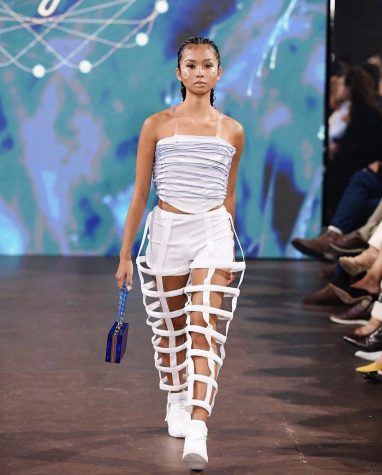Fashion (n.): A popular trend, especially in styles of dress and ornament or manners of behavior.
What people choose to wear is the ultimate form of self-expression. This notion is not new; it has been the case for many generations. This long history shows us how much fashion has changed and how it still continues to change.
Fashion has always been a staple in society. Dating back to ancient times in the Egyptian and Roman empires, what you wore depended on your status. Upper-class people wore more expensive and elaborate luxury items like gold and jewels. In contrast, the lower classes wore more simple attire that was less expensive and easier to come by.
“If you go back one hundred years, there were painters and artists who painted their observations of society and what women and men wore, by painting that and making that available to people to see, had an influence on society, and how they adapted their own fashion styles,” said Franziska Bussiek.
Bussiek worked in the fashion industry in Germany for Escada and under the designer Wolfgang Joop. She feels that media plays a massive role in today’s fashion industry as well as the fashion industry from past generations.
“It’s like you have a picture. You see it. And then you think, oh, that’s cool. Everyone’s talking about it. Let’s do that as well. And as of today, with mass media, and a twenty-four-seven communication circle even more,” Bissiek said.
In the 1950s, after the Second World War, American society was eager to go back to the way it was before the war, many people think of the style of Americans at that time as “quintessentially American.” People would get inspiration from magazines like Spiegel or Vogue, magazines in which, due to the restricting nature of society in the 1950s, there was very little diversity. Women wore dresses or skirts that allowed them to achieve the “new look” silhouette, have a set hairstyle for their facial shape, and wore a specific color of lipstick. Men generally wore a three-piece suit. These generic styles morphed over time to become more adventurous and individualized.
“Back then, women didn’t express themselves that much, but I definitely think as time went on, people did start to grow more and more apart and reflect who they truly are,” said Sofia Christoforidis, a senior interested in pursuing a career in fashion design.
If you look around you, everyone that you see has their way of dressing. Fashion trends allow for similarity in clothing, but everyone puts their spin on it, whether that is through jewelry, shoes, hair, or other accessories.
“A lot of people don’t feel comfortable going out on their own and finding their own style. So they try to find it through societal norms and trends, and then they start to find their voice within fashion,” said junior Aristea Cottereau.

Fashion trends originate from runway shows as well as significant fashion events that happen throughout the year. Many of these trends are televised or are live on social media.
“Social media has had a huge influence on fashion. I think fashion trends change a lot quicker because of social media […] it’s made fashion more visible and sociable to a more amount of people,” said Laura Dowling.
Dowling is now a chief marketing officer of a holding company but previously worked for David Yurman, Ralph Lauren, Coach, and other designer brands. Dowling’s holding company carries and manages the sales of many luxury brands and other apparel brands.
The use of new forms of media, such as television, in the high-end fashion industries in Europe and America throughout the 1960s and 1970s allowed more people to see new fashion trends faster.
During those two decades, many previously established societal norms began to change, such as the role of women in both society and the workforce, as well as the sexual revolution. The most significant change that happened during this time was African Americans gaining the right to vote. Fashion reflected this newfound freedom found in society.
When swinging London hit its peak in 1966, according to the fashion history timeline, men began to wear brightly colored suits with intricate patterns. Most women wore dresses in bright colors with shorter skirts that reflected the youthful look many were going for at the time.
A lot of people don’t feel comfortable going out on their own and finding their own style. So they try to find it through societal norms and trends, and then they start to find their own voice within fashion — Aristea Cottereau
The hippy movement of the late 1960s, allowed for even more freedom as people wore free-flowing clothing or no clothing at all. This freedom in dress continued to the disco era of the 1970s as women wearing pants became more common.
“When Twiggy became famous as a model, suddenly the idea of a woman’s figure was very slim,” Bussiek said.
Twiggy became famous as a fashion model in the 1960s, and she was known for her slim figure, just like models today.
A model’s primary goal is to show off the clothing that was designed by the designer, and how the designer chooses to style the model can influence consumers on what they want to buy. Being flexible and changing when society does is one of the reasons fashion houses can stay popular for so long.
On Sept. 13, 2021, the annual MET gala showed celebrities wearing amazing outfits by mainstream and high-end brands. While these designs are jaw-dropping and a lot of time has gone into them, these outfits are not something that the general public can wear.
“What fashion does is it goes too far, far extremes when it’s first created, and then it is brought down the chain to more customer-driven transactional content, then it becomes more about society,” Dowling said, “Fashion shapes society because society needs that point of interest. If we don’t have these different artistic and cultural influences, then we would be very bland.”













